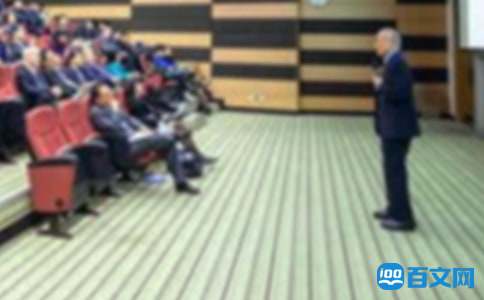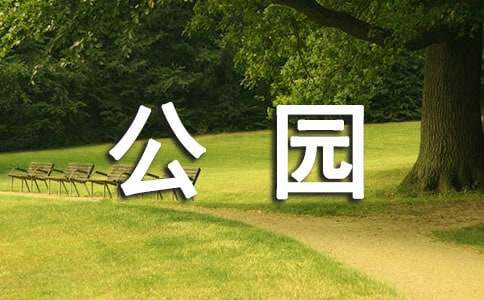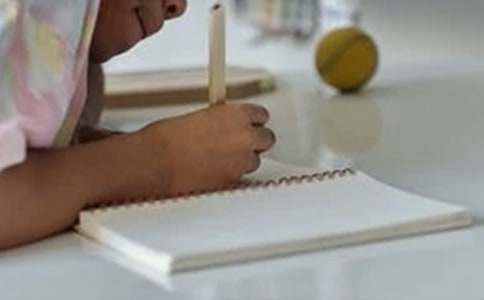小學英語語法大全
語法有兩個 含義,一指語法結構規律本身,即語法事實;一指 語法學,是探索并描寫語法結構的科學,是語法學者對客觀存在的語法體系的認識和說明。以下是小編整理的關于小學英語語法大全,希望大家認真閱讀!

一. 名詞復數的規則變化
一般情況
加 -s
1.清輔音后讀/s/;
map-maps
2.濁輔音和元音后
bag-bags
car-cars
以s,sh,ch,x等結尾的詞
加 -es
bus-buses
watch-watches
以ce,se,ze,(d)ge等結尾的詞
加 -s
license-licenses
以輔音字母+y結尾的詞
變y 為i再加es
baby---babies
二. 其它名詞復數的規則變化
1) 以y結尾的專有名詞,或元音字母+y 結尾的名詞變復數時,直接加s變復數:
如:two Marys
比較:storey ---storeys story---stories
2) 以o 結尾的名詞,變復數時:
加s,如: photo---photos piano---pianos
加es,如:potato--potatoes tomato--tomatoes
均可,如:zero---zeros / zeroes
3) 以f或fe 結尾的名詞變復數時:
加s,如: belief---beliefs roof---roofs
去f,fe 加ves,如:half---halves
均可,如: handkerchief: handkerchiefs / handkerchieves
三. 名詞復數的不規則變化
1)不規則變化
child---children、foot---feet、tooth---teeth、mouse---mice、man---men、woman---women
注意:與 man 和 woman構成的合成詞,其復數形式也是 -men 和-women。
如: an Englishman,two Englishmen.
但German不是合成詞,故復數形式為Germans;
Bowman是姓,其復數是the Bowmans
2)單復同形
如:deer,sheep,fish,Chinese,Japanese
但除人民幣元、角、分外,美元、英鎊、法郎等都有復數形式。
如:a dollar, two dollars;a meter, two meters
3)集體名詞,以單數形式出現,但實為復數
如: people、police、cattle 等本身就是復數,不能說 a people,a police,a cattle,
但可以說:a person,a policeman
表示國民總稱時,作復數用。
如: The Chinese are industries and brave. 中國人民是勤勞勇敢的。
4)以s結尾,仍為單數的名詞
如:maths,politics,physics等學科名詞,為不可數名詞,是單數。
news 是不可數名詞。
the United States,the United Nations 應視為單數。
以復數形式出現的書名,劇名,報紙,雜志名,也可視為單數。
"The Arabian Nights" is a very interesting story-book.
<<一千零一夜>>是一本非常有趣的故事書。
5) 表示由兩部分構成的東西
如:glasses (眼鏡) trousers, clothes
若表達具體數目,要借助數量詞 pair(對,雙); suit(套); a pair of glasses; two pairs of trousers
6) 另外還有一些名詞,其復數形式有時可表示特別意思
如:goods貨物,waters水域,fishes(各種)魚
四. 不可數名詞量的表示
1)物質名詞
當物質名詞轉化為個體名詞時
比較:
Cake is a kind of food.(不可數)
These cakes are sweet.(可數)
當物質名詞表示該物質的種類時,名詞可數
比較:
This factory produces steel.(不可數)
We need various steels.(可數)
當物質名詞表示份數時,可數
比較:
Our country is famous for tea.(不可數)
Two teas, please.(可數)
2) 抽象名詞有時也可數
four freedoms 四大自由
the four modernizations四個現代化
物質名詞和抽象名詞可以借助單位詞表一定的數量。
如:
a glass of water 一杯水
a piece of advice 一條建議
五. 定語名詞的復數
名詞作定語一般用單數,但也有以下例外
1) 用復數作定語
如:
sports meeting 運動會
students reading-room 學生閱覽室
talks table 談判桌
2) man, woman, 等作定語時,其單復數以所修飾的名詞的單復數而定
如:
men workers
women teachers
3) 有些原有s結尾的名詞,作定語時,s保留
如:
goods train (貨車)
arms produce 武器生產
4) 數詞+名詞作定語時,這個名詞一般保留單數形式
如:
two-dozen eggs 兩打/(二十四個雞蛋)
a ten-mile walk 十里路
六. 名詞所有格
在英語中有些名詞可以加"'s"來表示所有關系,帶這種詞尾的名詞形式稱為該名詞的所有格,如:a teacher's book。名詞所有格的規則如下:
1) 單數名詞詞尾加"'s",復數名詞詞尾沒有s,也要加"'s"
如:
the boy's bag
men's room
2) 若名詞已有復數詞尾-s ,只加"'"
如:the workers' struggle
3) 凡不能加"'s"的名詞,都可以用"名詞+of +名詞"的結構來表示所有關系
如:the title of the song
4) 在表示店鋪或教堂的名字或某人的家時,名詞所有格的后面常常不出現它所修飾的名詞
如:the barber's
5) 如果兩個名詞并列,并且分別有's,則表示"分別有";只有一個's,則表示'共有'
如:
John's and Mary's room(兩間)
John and Mary's room(一間)
6) 復合名詞或短語,'s 加在最后一個詞的詞尾
如:a month or two's absence
七.不定冠詞的用法
冠詞是虛詞,本身不能單獨使用,也沒有詞義,它用在名詞的前面,幫助指明名詞的含義。
英語中的冠詞有三種:
一種是定冠詞(the Definite Article)
另一種是不定冠詞(the Indefinite Article)
還有一種是零冠詞(Zero Article)
不定冠詞a (an)與數詞one 同源,是"一個"的意思。
a用于輔音音素前,一般讀作[e],
an用于元音音素前,一般讀做[en]。
1) 表示"一個",意為one;指某人或某物,意為a certain
A Mr. Ling is waiting for you.
2) 代表一類人或物
A knife is a tool for cutting with.
Mr. Smith is an engineer.
3) 詞組或成語
a little / a few / a lot / a type of / a pile / a great many / many a / as a rule / in a hurry / in a minute / in a word / in a short while / after a while / have a cold / have a try / keep an eye on / all of a sudden
八.定冠詞的用法
定冠詞the與指示代詞this,that同源,有"那(這)個"的意思,但較弱,可以和一個名詞連用,來表示某個或某些特定的人或東西。
1)特指雙方都明白的人或物:
Take the medicine.
2)上文提到過的人或事:
He bought a house.
I've been to the house.
3)指世上獨一物二的事物:
the sun、the sky、the moon、the earth
4)單數名詞連用表示一類事物:
the dollar 美元、the fox 狐貍
或與形容詞或分詞連用,表示一類人:
the rich 富人、the living 生者
5)用在序數詞和形容詞最高級,及形容詞only、very、same等前面:
Where do you live?
I live on the second floor.
6)與復數名詞連用,指整個群體:
They are the teachers of this school.(指全體教師)
They are teachers of this school.(指部分教師)
7)表示所有,相當于物主代詞,用在表示身體部位的名詞前:
She caught me by the arm.. 她抓住了我的手臂
8)用在某些由普通名詞構成的國家名稱、機關團體、階級、等專有名詞前:
the People's Republic of China 中華人民共和國
the United States 美國
9)用在表示樂器的名詞之前:
She plays the piano.
10) 用在姓氏的復數名詞之前,表示一家人:
the Greens 格林一家人 (或格林夫婦)
11) 用在慣用語中:
in the day, in the morning (afternoon,evening), the day after tomorrow
the day before yesterday, the next morning,
in the sky (water,field,country)
in the dark, in the rain, in the distance,
in the middle (of), in the end,
on the whole, by the way, go to the theatre
九. 零冠詞的用法
1) 國名,人名前通常不用定冠詞
England,Mary;
2)泛指的復數名詞,表示一類人或事物時,可不用定冠詞
They are teachers. 他們是教師
3)抽象名詞表示一般概念時,通常不加冠詞
Failure is the mother of success.
失敗乃成功之母
4)物質名詞表示一般概念時,通常不加冠詞,當表示特定的意思時,需要加定冠詞
Man cannot live without water.
人離開水就無法生存
5)在季節、月份、節日、 假日、日期、星期等表示時間的名詞之前,不加冠詞
We go to school from Monday to Friday.
6)在稱呼或表示官銜,職位的名詞前不加冠詞
The guards took the American to General Lee.
士兵們把這個美國人送到李將軍那里
7)在三餐、球類運動和娛樂運動的名稱前,不加冠詞
如:have breakfast,play chess
8)當兩個或兩個以上名詞并用時,常省去冠詞
I can't write without pen or pencil.
沒有鋼筆和鉛筆,我就寫不了字
9)當by與火車等交通工具連用,表示一種方式時,中間無冠詞
by bus,by train
10)有些個體名詞不用冠詞
如:
school,college,prison,market,hospital,bed,table,class,town,church,court 等個體名詞,直接置于介詞后,表示該名詞的深層含義;
go to hospital去醫院看病
go to the hospital去醫院 (并不是去看病,而是有其他目的)
11)不用冠詞的序數詞
a. 序數詞前有物主代詞
b. 序數詞作副詞
He came first in the race.
c. 在固定詞組中
at (the) first,first of all,from first to last
十. 冠詞與形容詞+名詞結構
1) 兩個形容詞都有冠詞,表示兩個不同東西
He raises a black and a white cat.
他養了一只黑貓和一只白貓
The black and the white cats are hers.
這只黑貓和白貓都是他的
2) 如后一個形容詞無冠詞,則指一物
He raises a black and white cat.
他養了一只花貓
十一. 冠詞位置
1) 不定冠詞位置
不定冠詞常位于名詞或名詞修飾語前
a. 位于下列形容詞之后: such,what,many,half
I have never seen such an animal.
Many a man is fit for the job.
b. 當名詞前的形容詞被副詞as, so, too, how, however, enough修飾時,不定冠詞應放在形容詞之后
It is as pleasant a day as I have ever spent.
So short a time.
Too long a distance.
c. quite,rather與單數名詞連用,冠詞放在其后
但當rather,quite 前仍有形容詞,不定冠詞放其前后均可。如:quite a lot
d. 在as,though 引導的讓步狀語從句中,當標語為形容詞修飾的名詞時,不定冠詞放形容詞后
Brave a man though he is,he trembles at the sight of snakes.
他盡管勇敢,可見到蛇還是發抖
當名詞被比較級形容詞修飾時,不定冠詞通常置于比較級形容詞之后
2) 定冠詞位置
定冠詞通常位于名詞或名詞修飾語前,但放在all, both,double,half,twice,three times等詞之后,名詞之前。
All the students in the class went out.
班里的所有學生都出去了
十二. 數詞
表示數目多少或順序多少的詞叫數詞,數詞分為基數詞和序數詞。表示數目多少的數詞叫基數詞;表示順序的數詞叫序數詞。
一、基數詞
1)基數詞寫法和讀法:
345 three hundred and forty-five;
2)基數詞一般是單數形式,但下列情況,常用復數:
a. 與of 短語連用,表示概數,不能與具體數目連 用,如scores of people 指許多人;
b. 在一些表示"一排"或"一組"的詞組里;
如:They arrived in twos and threes. 他們三三兩兩的到達了。
c. 表示"幾十歲";
d. 表示"年代",用 in +the +數詞復數;
e. 在乘法運算的一種表示法里,如:3 x 5 = 15 Three fives is (are) fifteen.
二、序數詞
序數詞的縮寫形式:
first---1st second---2nd thirty-first---31st
三、 數詞的用法
1)倍數表示法
a. 主語+謂語+倍數(或分數)+ as + adj. + as
I have three times as many as you. 我有你三倍那么多。
b. 主語+謂語+倍數(分數)+ the size (amount,length…) of…
The earth is 49 times the size of the moon. 地球是月球的49倍。
c. 主語+謂語+倍數(分數)+ 形容詞(副詞)比較級+ than…
The grain output is 8 percent higher this year than that of last year.
今年比去年糧食產量增加8%。
d. 還可以用by+倍數,表示增加多少倍
The production of grain has been increased by four times this year.
今年糧食產量增加了4倍。
2)分數表示法
構成:基數詞代表分子,序數詞代表分母。分子大于1時,分子的序數詞用單數,分母序數詞用復數:
1/3 one-third ;
3/37 three and three-sevenths.
十三.人稱代詞的用法
1)人稱代詞的主格在句子中作主語或主語補語,
例如:
John waited a while but eventually he went home.
約翰等了一會兒,最后他回家了。
John hoped the passenger would be Mary and indeed it was she.
約翰希望那位乘客是瑪麗,還真是她。
說明:在復合句中,如果主句和從句主語相同,代詞主語要用在從句中,名詞主語用在主句中,例如:
When he arrived, John went straight to the bank.
約翰一到就直接去銀行了。
2)人稱代詞的賓格在句子中作賓語或介詞賓語,但在口語中也能作主語補語,第一人稱在省略句中,還可以作主語,
例如:
I saw her with them, at least, I thought it was her.
我看到她和他們在一起,至少我認為是她。(her做賓 語,them做介詞賓語,her做主語補語)
a. -- Who broke the vase? --誰打碎了花瓶?
b. -- Me.--我。(me做主語補語= It's me.)
說明:在上面兩例句中,her和me分別作主語補語。現代英語中多用賓格,在正式文體中這里應為she和I。
十四. 人稱代詞之主、賓格的替換
1) 賓格代替主格
a.在簡短對話中,當人稱代詞單獨使用或在not 后,多用賓語。
---- I like English. --我喜歡英語。
---- Me too. --我也喜歡。
---- Have more wine? --再來點酒喝嗎?
---- Not me. --我可不要了。
b.在表示比較的非正式的文體中,常用賓格代替主格。 但如果比較狀語的謂語保留,則主語只能用主格。
He is taller than I/me.
He is taller than I am.
2) 主格代替賓格
a. 在介詞but,except 后,有時可用主格代替賓格。
b. 在電話用語中常用主格。
---- I wish to speak to Mary. --我想和瑪麗通話。
---- This is she. --我就是瑪麗。
注意:在動詞be 或to be 后的人稱代詞視其前面的名詞或代詞而定。
I thought it was she. 我以為是她。(主格----主格)
I thought it to be her. (賓格----賓格)
I was taken to be she.我被當成了她。(主格----主格)
They took me to be her. 他們把我當成了她。 (賓格----賓格)
十五. 代詞的指代問題
1)不定代詞 anybody,everybody,nobody,anyone, someone, everyone,no one, 及whoever和person在正式場合使用時,可用he, his, him代替。
Nobody came, did he? 誰也沒來,是嗎?
2)動物名詞的指代一般用it或they代替,有時也用he, she,帶有親切的感情色彩。
Give the cat some food. She is hungry. 給這貓一些吃的。她餓了。
3)指代車或國家,船舶的名詞,含感情色彩時常用she。
十六. 并列人稱代詞的排列順序
1) 單數人稱代詞并列作主語時,其順序為:
第二人稱 -> 第三人稱 -> 第一人稱
you -> he/she; it -> I
You, he and I should return on time.
2) 復數人稱代詞作主語時,其順序為:
第一人稱 -> 第二人稱 -> 第三人稱
we -> you -> They
注意: 在下列情況中,第一人稱放在前面。
a. 在承認錯誤,承擔責任時,
It was I and John that made her angry.
是我和約翰惹她生氣了。
b. 在長輩對晚輩,長官對下屬說話時,如長官為第一人稱, 如:I and you try to finish it.
c. 并列主語只有第一人稱和第三人稱時,
d. 當其他人稱代詞或名詞被定語從句修飾時。
十七. 物主代詞
1)物主代詞既有表示所屬的作用又有指代作用
例如:
John had cut his finger; apparently there was a broken glass on his desk.
約翰割破了手指,顯而易見,他桌子上有個破玻璃杯。
物主代詞有形容詞性(my, your等)和名詞性(mine, yours等)兩種,形容詞性的物主代詞屬于限定詞。
名詞性的物主代詞在用法上相當于省略了中心名詞的` --'s屬格結構,例如:
Jack's cap 意為 The cap is Jack's.
His cap 意為 The cap is his.
2) 名詞性物主代詞的句法功能
a. 作主語,例如:
May I use your pen? Yours works better.
我可以用一用你的鋼筆嗎? 你的比我的好用。
b. 作賓語,例如:
I love my motherland as much as you love yours.
我愛我的祖國就像你愛你的祖國一樣深。
c. 作介詞賓語,例如:
Your should interpret what I said in my sense of the word, not in yours.
你應當按我所用的詞義去解釋我說的話,而不能按你自己的意義去解釋。
d. 作主語補語,例如:
The life I have is yours. It's yours. It's yours. 我的生命屬于你,屬于你,屬于你。
十八. 雙重所有格
物主代詞不可與 a, an, this, that, these, those, some, any, several, no, each, every, such, another, which等詞一起前置,修飾一個名詞,而必須用雙重所有格。
公式為:
a, an, this, that +名詞+of +名詞性物主代詞。如:
a friend of mine.
each brother of his.
十九.反身代詞
1) 列表
I-myself
we-ourselves
you-yourself
you-yourselves
she-herself
he-himself
they-themselves
2)做賓語
a. 有些動詞需有反身代詞
absent, bathe, amuse, blame, dry, cut, enjoy, hurt, introduce, behave
We enjoyed ourselves very much last night.
我們昨晚玩得很開心
Please help yourself to some fish.
請你隨便吃點魚
b. 用于及物動詞+賓語+介詞
take pride in, be annoyed with, help oneself to sth.
I could not dress (myself) up at that time.
那個時候我不能打扮我自己
注:有些動詞后不跟反身代詞, get up, sit-down, stand up, wake up等。
Please sit down.
請坐
3) 作表語; 同位語
be oneself: I am not myself today.
我今天不舒服
The thing itself is not important.
事情本身并不重要
4) 在不強調的情況下,but, except, for 等介詞后賓語用反身代詞或人稱代詞賓格均可
如:
No one but myself (me) is hurt.
注意:
a. 反身代詞本身不能單獨作主語。
(錯) Myself drove the car.
(對) I myself drove the car. 我自己開車。
b. 但在and, or, nor連接的并列主語中,第二個主語可用反身代詞,特別是myself 作主語。
Charles and myself saw it.
5)第二人稱作賓語,要用反身代詞
You should be proud of yourself.
你應為自己感到驕傲
二十.相互代詞
1)相互代詞只有each other和one another兩個詞組
他們表示句中動詞所敘述的動作或感覺在涉及的各個對象之間是相互存在的
例如:
It is easy to see that the people of different cultures have always copied each other.
顯而易見,不同文化的人總是相互借鑒的
2) 相互代詞的句法功能:
a. 作動詞賓語;
People should love one another. 人們應當彼此相愛。
b. 可作介詞賓語;
Does bark, cocks crow, frogs croak to each other. 吠、雞鳴、蛙兒對唱。
說明:傳統語法認為,相互關系存在于兩個人或物之間用each other, 存在于兩個以上人和物之間用one another。現代英語中,兩組詞交替使用的實例也很多,例如:
He put all the books beside each other.
他把所有書并列擺放起來。
He put all the books beside one another.
他把所有書并列擺放起來。
Usually these small groups were independent of each other.
這些小團體通常是相互獨立的。
c. 相互代詞可加-'s構成所有格,例如:
The students borrowed each other's notes.
學生們互借筆記。
二十一. 指示代詞
1) 指示代詞分單數(this / that)和復數(these / those)兩種形式,既可作限定詞又可做代詞
例如:
單數復數
限定詞:This girl is Mary.Those men are my
teachers.
代詞: This is Mary. Those are my
teachers.
2) 指示代詞的句法功能
a. 作主語
This is the way to do it.
這事兒就該這樣做
b. 作賓語
I like this better than that.
我喜歡這個甚至那個
c. 作主語補語
My point is this.
我的觀點就是如此
d. 作介詞賓語
I don't say no to that.
我并未拒絕那個
There is no fear of that.
那并不可怕
說明1:
指示代詞在作主語時可指物也可指人,但作其他句子成分時只能指物,不能指人,例如:
(對)That is my teacher. 那是我的老師。( that作主語,指人)
(對)He is going to marry this girl. 他要和這個姑娘結婚。(this作限定詞)
(錯)He is going to marry this. (this作賓語時不能指人)
(對)I bought this. 我買這個。(this指物,可作賓語)
說明2:
That和those可作定語從句的先行詞,但this和 these不能,同時,在作先行詞時,只有those可指人,試比較:
(對) He admired that which looked beautiful. 他贊賞外表漂亮的東西。
(對) He admired those who looked beautiful. 他贊賞那些外表漂亮的人。(those指人)
(錯) He admired that who danced well. (that作賓語時不能指人)
(對) He admired those who danced well. 他贊賞跳舞好的人。(those指人)
(對) He admired those which looked beautiful. 他贊賞那些外表漂亮的東西。(those指物)
二十二. 關系代詞
1) 關系代詞用來引導定語從句。它代表先行詞,同時在從句中作一定的句子成分
例如:The girl to whom I spoke is my cousin. 跟我講話的姑娘是我表妹。
(該句中whom既代表先行詞the girl,又在從句中作介詞to的賓語。)
2) 關系代詞有主格,賓格和屬格之分,并有指人與指物之分。在限定性定語從句中,that 可指人也可指物
見表:
限定性 非限定性限定性
指 人 指物 指人或指物
主 格 who which that
賓 格 whomthat that
屬 格 whose of which/whose of which/whose
例如:
This is the pencil whose point is broken.
這就是那個折了尖的鉛筆。
(whose 指物,在限定性定語從句中作定語)
He came back for the book which he had forgotten. 他回來取他丟下的書。
(which指物,在限定性定語從句中作賓語,可以省略)
3) 關系代詞which的先行詞可以是一個句子,例如:
He said he saw me there, which was a lie.
他說在那兒看到了我,純屬謊言。
說明: 關系代詞that在從句中作賓語或表語時可省略, 例如:
I've forgotten much of the Latin I once knew.
我過去懂拉丁語,現在大都忘了。
He's changed. He's not the man he was.
他變化很大,已不是過去的他了。
二十三. every,no,all,both,neither,nor
1)不定代詞有
all , both, every, each, either, neither, more, little, few, much, many, another, other, some, any , one, no 以及some, something, anything, everything, somebody, someone, anybody, anyone, nothing , nobody, no one, none, everybody, everyone.等。
2)不定代詞的功能與用法
a. 除every 和no外不定代詞既可用作名詞,也可用作形容詞。every和no在句中只能作定語。
I have no idea about it.
b. all 都,指三者以上。
all 的主謂一致:all的單復數由它所修飾或指代的名詞的單復數決定。
All goes well. 一切進展得很好。
all 通常不與可數名詞單數連用,如:不說 all the book,而說 the whole book。
但all可與表時間的可數名詞單數連用,如 all day,all night,all the year; 但習慣上不說 all hour,all century。
all還可以與一些特殊的單數名詞連用,如 all China, all the city, all my life, all the way
3)both都,指兩者
a. both 與復數動詞連用,但 both… and…可與單數名詞連用。
b. both, all 都可作同位語,其位置在行為動詞前, be 動詞之后。如果助動詞或情態動詞后面的實義動詞省 去,則位于助動詞或情態動詞之前。
Who can speak Japanese?We both (all) can.
4)neither兩者都不
a. neither作主語時,謂語動詞用單數。
b. 作定語與單數名詞連用,但neither… nor 用作并列連詞,可與復數名詞連用。其謂語采用就近原則。
c. 可用于下列句型,避免重復。
She can't sing,neither (can) he.
neither 與nor
d. 如前句是否定式從句,則主句用neither,而不用 nor。
If you don't do it,neither should I. 如果你不干,我也不干。
e. 如后連續有幾個否定句式,則用nor,不用neither。
He can't sing,nor dance,nor skate.
二十四. none,few,some,any,one,ones
一、 none 無
1) none作主語,多與of 構成短語 none of。 在答語中,none可單獨使用。
Are there any pictures on the wall? None.
2) none作主語,謂語動詞單復數均可。但如做表語,則其單復數與表語一致。
It is none of your business.
二、few 一些,少數
few 作主語時,謂語動詞用復數,多用于肯定句。
三、some 一些
1) 可與復數名詞及不可數名詞連用。
2) 當做"某一"解時,也可與單數名詞連用。(= a certain)
You will be sorry for this some day.
總有一天,你會后悔這件事的。
A certain (some) person has seen you break the rule.
某些人不同意你的看法。
注意:
(1)在肯定疑問句中用some代替any。
(2)some用于其他句式中:
a. 肯定疑問句中:說話人認為對方的答案會是肯定的,或期望得到肯定回答時。
Would you like句式中,表委婉請求或建議,如:
Would you like some coffee?
b. 在條件狀語從句中表示確定的意義時,如:
If you need some help,let me know.
c. some位于主語部分,
Some students haven't been there before.
d. 當否定的是整體中的部分時,some可用于否定句。如:
I haven't heard from some of my old friends these years.
這些年我沒有收到一些老朋友的信。
四、any 一些
any 多用于否定句和疑問句和條件狀語從句中。
當句中含有任何的意思時,any可用于肯定句。
Here are three novels. You may read any.
這有三本小說,你可任讀一本
五、one, ones 為復數形式
ones必須和形容詞連用。如果替代的名詞時無形容詞在前,則用some, any,而不用ones。
Have you bought any rulers?
Yes,I 've bought some.
二十五.代詞比較辯異one,that和it
one表示泛指,that和it 表示特指。that與所指名詞為同類,但不是同一個,而it 與所指名詞為同一個。
I can't find my hat. I think I must buy one. (不定)
我找不到我的帽子了。我想我該去買一頂。
The hat you bought is bigger than that I bought. (同類但不同個)
你買的那頂帽子比我買的大。
I can't find my hat. I don' t know where I put it. ( 同一物)
我找不到我的帽子。我不知道我把它放在哪了。
二十六. one/another/the other
one… the other 只有兩個
some… the others 有三個以上
one… another,another…
some… others,others…
others = other people/things
the others = the rest 剩余的全部
1) 泛指另一個用another。
2) 一定范圍內兩人(物),一個用one,另一個用the other。
3) 一定范圍內三者,一個用one,另一個用one (another),第三個可用the other,a third。
4) 一定范圍內,除去一部分人/物,剩余的全部用the others。
5) 泛指別的人或物時,用others當在一定范圍內,除去一部分后,剩余部分但不是全部時,也用others。
二十七. anyone/any one;no one/none;every/each
1.anyone 和 any one
anyone僅指人,any one既可指人,也可指物
2.no one 和none
a) none 后跟of短語,既可指人又可指物,而no one只單獨使用,只指人。
b) none 作主語,謂語動詞用單,復數均可,而no one作主語謂語動詞只能是單數。
None of you could lift it. 你們中沒有人可舉起它。
---- Did any one call me up just now? --剛才有人打電話給我嗎?
---- No one. --沒有。
3.every 和each
1) every 強調全體的概念, each強調個體概念。
Every student in our school works hard. 我們學校的學生都很用功。
Each student may have one book.. 每個學生都可有一本書。
2) every 指三個以上的人或物(含三個),each指兩個以上的人或物 (含兩個)。
3) every 只作形容詞,不可單獨使用。each可作代詞或形容詞。
Every student has to take one.
Each boy has to take one.
Each of the boys has to take one.
4) every不可以作狀語,each可作狀語。
5) every 有反復重復的意思,如 every two weeks等; each沒有。
6) every 與not 連用,表示部分否定; each 和not連用表示全部否定。
Every man is not honest. 并非每個人都誠實。
Each man is not honest. 這兒每個人都不誠實。
二十八. both,either,neither,all,any,none
這些詞都可用作代詞或形容詞。其位置都在be 動詞之后,行為動詞之前或第一助動詞之后。
1) both (兩者都),either(兩者中任何一個), neither (兩者都不)
以上詞使用范圍為兩個人或物
Neither of the two boys is clever. 兩個男孩都不聰明。
2) both,either
both與復數連用,either與單數連用。
Both the boys are clever. 兩個男孩都很聰明。
Either of the two boys is clever. 兩個男孩都很聰明。
There are flowers on both sides of the street.
(兩岸)
There are flowers on either side of the street.
(岸的兩邊)
路邊長滿了野花。
3) all (所有的,全部的人或物),any (任何一個), none (都不)
以上詞使用范圍為三者以上
All the flowers are gone. 所有的花都謝了。
I don't like any of the flowers. 這些花我都不喜歡。
I like none of the flowers. 這些花我都不喜歡。
注意:all與none用法一樣。跟單數名詞,用單數動詞;跟復數名詞,用復數動詞。
All of the students are there.
所有的學生都在那。
All (of) the milk is there.
所有的牛奶都在那。
二十九. few,little,a few,a little
(a) few + 可數名詞,
(a) little + 不可數名詞
a few / a little 為肯定含義,還有一點
few / little 為否定含義,沒有多少了。
He has a few friends. 他有幾個朋友。
He has few friends. 他幾乎沒有朋友。
We still have a little time. 我們還有點時間。
There is little time left.幾乎沒剩下什么時間了。
典型例題:
Although he 's wealthy,he spends___ on clothes.
A. little B. few C. a little D. a few
答案: A. spend所指的是錢,不可數,只能用little或 a little. 本句為although引導的讓步狀語從句,由句意知后句為否定含義,因此應用little表示幾乎不。
固定搭配:
only a few (=few)
not a few (=many)
quite a few (=many)
many a (=many)
Many books were sold.
Many a book was sold.
賣出了許多書。
三十. 形容詞及其用法
形容詞修飾名詞,說明事物或人的性質或特征。通常,可將形容詞分成性質形容詞和敘述形容詞兩類,其位置不一定都放在名詞前面。
1)直接說明事物的性質或特征的形容詞是性質形容詞
它有級的變化,可以用程度副詞修飾,在句中可作定語、表語和補語。
例如:hot 熱的
2)敘述形容詞只能作表語,所以又稱為表語形容詞
這類形容詞沒有級的變化,也不可用程度副詞修飾。大多數以a開頭的形容詞都屬于這一類。
例如:afraid 害怕的。
(錯) He is an ill man.
(對) The man is ill.
(錯) She is an afraid girl.
(對) The girl is afraid.
這類詞還有: well,unwell,ill,faint,afraid,alike,alive,alone,asleep,awake 等。
3)形容詞作定語修飾名詞時,要放在名詞的前邊
但是如果形容詞修飾以-thing為字尾的詞語時,要放在這些詞之后,例如:
something nice
用形容詞表示類別和整體
某些形容詞加上定冠詞可以泛指一類人,與謂語動詞的復數連接。
如:the dead,the living,the rich,the poor,the blind,the hungry
The poor are losing hope.
有關國家和民族的形容詞加上定冠詞指這個民族的整體,與動詞的復數連用
the British,the English,the French,the Chinese.
The English have wonderful sense of humor.
注:多個形容詞修飾名詞時,其順序為:
限定詞--數詞--描繪詞--(大小,長短,形狀,新舊,顏色) --出處--材料性質,類別--名詞
小學英語語法簡單口訣
1.人稱代詞用法歌
人稱代詞分兩格,主格賓格來分說。主格用來作主語,賓語用的是賓格。人稱代詞都有數,單數復數莫用誤。
人稱代詞主格趣記歌
I 是我;you 是你;he,she ,it 他她它;I 的復數是個 we;you 的復數還是 you;男他女她動物它,張三李四單個他,他們的復數都是 they;簡單口訣要牢記,要牢記。
人稱代詞主格賓格之歌
I 是主格 me 是賓,請你一定記在心;主格用在動詞前,動詞介詞后用賓。
you 是主格,也是賓; he 是主格 him 是賓, she 是主格 her 是賓, it 是主格,也是賓, we 是主格 us 是賓, you 是主格,也是賓, they 是主格 them 是賓。
2.be動詞用法歌
我用am,你用are,is連接他,她,它。
單數名詞用is,復數名詞全用are。變疑問,往前提,句末問號莫丟棄。
變否定,更容易,be后not莫忘記。疑問否定任你變,句首大寫莫遲疑。
3.疑問詞的用法
疑問詞放句首,what 什么;where 哪里;when 問時間;
how 怎樣;要問原因為什么,why 放句首就可以;
疑問句有點難,勤做筆記多思考,遇問題別著急,先思考來后提問。
4.特殊疑問句用法
What用途廣,要問“什么”它當先。(What’s this?)
How開頭來“問安”。(How are you?)
Who問“誰”。(Who’s that man?)
“誰的”Whose來承擔。(Whose eraser is this?)
詢問“某地”用Where。(Where is her cat?)
“哪一個”Which句首站。(Which one?)
5.祈使句用法
祈使句,祈使句,請求、命令或建議。主語是you常省去,動詞原形開頭記。
否定形式要注意,句首要把Don’t加。要講客氣用please,句首句末沒關系。
6.動詞加-s或-es方法歌訣
動詞三單現在式,一般詞尾加-s。
s, x, ch, sh在詞尾,直接加上-es。
詞尾若是字母o,加上-es不用愁。
“輔音字母+y“來結尾,變y為i是正規。
-es后邊緊跟隨,study→studies看明白。
7.過去式之歌
標準過去式加-ed,少量不規則分別記,
am和is對was,二人稱復數are變were,
have和has用had,do和does變did。
規則動詞過去式構成方法口訣
過去式構成有方法,一般詞尾把-ed加。
如果詞尾有個e,直接加d就可以。
“輔音字母+y”在詞尾,變y為i加ed。
“一輔重閉”作尾巴,雙寫之后-ed加。
8.現在進行時用法
主語在句首,am, is, are跟在后,
現在分詞跟著走,其他成分不可丟。
表示動作正進行,句中now時間定。
一般問句,把be提到句前去。
否定句式也簡單,be后只把not添。
9.have/has的用法口訣
動詞have表示“有”,位置就在主語后。
“三單”主語用has,其他人稱用have。
10.There be句型用法口訣
There be句型有特點,主語放在be后邊。
主語單數用is,復數主語要用are。
變否定,很簡單,be后要把not添。
變問句也不難,把be提到there前。
肯定句中用some,否定/疑問要用any換。
11.變一般疑問
口訣之一
(一)can 、be、do、does在前
(二)第一(人稱)變第二(人稱)
(三)末尾用問號,語調用升調
(四)有some變any
口訣之二
(一) 有can有be,can、be提前
(二) 沒有can、be的,do、does顯身手,三單用does,does后動詞還原
(三) 其他人稱do在前
12.變否定句
口訣之一
(一) can、be、do、does后面not添
(二) 有some變any
訣之二
(一)有can有be,can、be后面not添
(二)沒有can、be、do、does顯身手,單三用doesn’t,doesn’t后面動還原
(三) 其他人稱don’t動詞前
这里有更多你想看的|
|
- 上一篇:簡易手工燈籠制作方法圖解視頻 簡易手工燈籠制作方法圖解大全
- 下一篇:返回列表






